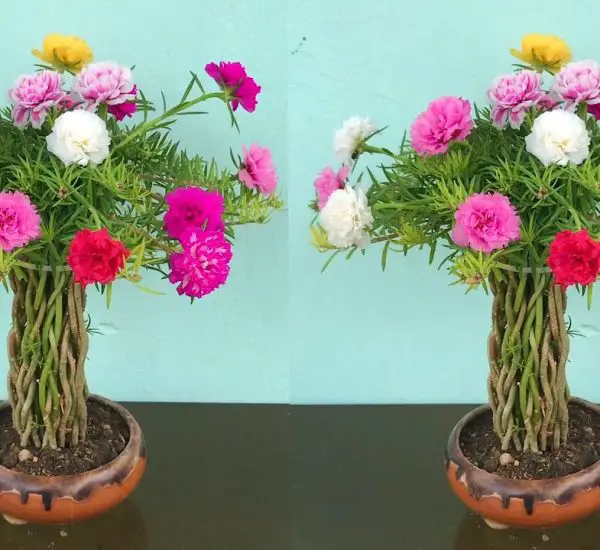If you’re looking to expand your indoor garden or propagate your favorite plants, one of the easiest and most rewarding methods is stem propagation. This technique allows you to create new plants from the stems of your existing trees or shrubs, and it works particularly well for houseplants like Dieffenbachia. Known for its stunning variegated leaves, Dieffenbachia is a popular ornamental plant that can be easily multiplied using simple stems. In this article, we’ll walk you through the step-by-step process of propagating Dieffenbachia from its stems.

Why Propagate Dieffenbachia by Stem?
Dieffenbachia, also known as the “Dumb Cane”, is a beautiful, low-maintenance houseplant that thrives indoors with minimal care. Propagating Dieffenbachia by stem is an excellent way to create new plants for your home or share with friends. Some key reasons to propagate Dieffenbachia using stems include:
- Cost-Effective: Instead of buying new plants, you can multiply your existing ones, saving money.
- Easy Process: Stem propagation is a simple technique that requires only a few tools and basic knowledge.
- Rapid Growth: New plants often develop quickly from stem cuttings, giving you more foliage in less time.
Materials Needed for Propagating Dieffenbachia Stems
Before you start propagating Dieffenbachia, make sure you have the following materials on hand:
- Healthy Dieffenbachia plant: Choose a plant with healthy stems and leaves.
- Sharp knife or pruning shears: To cut the stem cleanly without damaging the plant.
- Small containers: These will hold the stem cuttings while they develop roots.
- Water or soil: You can propagate Dieffenbachia in either water or soil, depending on your preference.
- Rooting hormone (optional): While not necessary, rooting hormone can speed up the process and promote healthier root development.
Step-by-Step Guide to Propagating Dieffenbachia from Stems
Follow these simple steps to propagate your Dieffenbachia using stem cuttings:
1. Choose the Right Stem Cutting
- Start by selecting a healthy, mature stem from your Dieffenbachia plant. Make sure the stem is free from pests, diseases, or signs of damage.
- The stem cutting should be about 4-6 inches long, with at least one or two nodes (the small bumps where leaves emerge). This is crucial because the roots will grow from these nodes.
- Using a sharp knife or pruning shears, cut the stem just below a node. Ensure the cut is clean to minimize the risk of infection.
2. Prepare the Cutting for Propagation
- If you’re propagating in water, place the cutting in a clean container with enough water to submerge the node. Make sure that only the node is underwater, not the entire stem.
- If you’re propagating in soil, dip the cut end of the stem into rooting hormone (optional) to promote quicker rooting. Then, plant the cutting in a small pot filled with well-draining soil. Ensure the node is buried in the soil.
- Keep the container in a warm and bright spot, but out of direct sunlight, as too much heat can dry out the cutting.
3. Maintain Proper Conditions
- If propagating in water, change the water every 2-3 days to prevent stagnation and the growth of harmful bacteria.
- If propagating in soil, water the cutting lightly to keep the soil consistently moist but not waterlogged.
- Humidity is essential for successful propagation. You can increase humidity by covering the cutting with a plastic bag or a small cloche to create a greenhouse effect.
4. Wait for Roots to Develop
- In water propagation, you should start seeing roots developing in 2-4 weeks. Once the roots are about 1-2 inches long, the cutting is ready to be planted in soil.
- In soil propagation, roots may take a little longer to develop, typically 4-6 weeks. You can check the cutting by gently tugging on it to see if it has developed a strong root system.
Transplanting Your New Dieffenbachia Plant
Once your Dieffenbachia cutting has developed a healthy root system, it’s time to transplant it into a larger pot with well-draining soil. Follow these tips to ensure a successful transplant:
- Choose the Right Pot: Select a pot that’s slightly larger than the root ball of your cutting, allowing room for growth.
- Planting the Cutting: Place the cutting in the new pot and fill the remaining space with soil, ensuring the roots are well-covered but not too deep.
- Watering: Water the new plant gently to settle the soil around the roots, and continue to keep the soil moist but not soggy.
- Sunlight: Place the newly potted Dieffenbachia in a spot with bright, indirect sunlight. Avoid direct sunlight, which can scorch the leaves.
Care Tips for Your New Dieffenbachia Plant
Once your new Dieffenbachia has been transplanted, continue to care for it properly to ensure healthy growth:
- Watering: Water the plant when the top inch of soil feels dry to the touch. Be careful not to overwater, as Dieffenbachia is sensitive to root rot.
- Fertilizing: Fertilize the plant once a month during the growing season (spring and summer) with a balanced liquid fertilizer.
- Humidity: Dieffenbachia plants prefer high humidity. Consider misting the leaves or using a humidity tray to keep the plant happy.
- Pruning: As your plant grows, prune away any dead or yellowing leaves to encourage new growth and maintain the plant’s appearance.
Conclusion: Simple Stem Cuttings for Beautiful New Dieffenbachia
Propagating Dieffenbachia through stem cuttings is a simple and effective way to multiply your plants and enjoy more of these stunning tropical beauties. By following these easy steps, you can successfully create new plants from the stems of your existing Dieffenbachia, adding to your collection or sharing with friends. Remember, patience is key when propagating, but the results are well worth the effort! Happy gardening! 🌿



